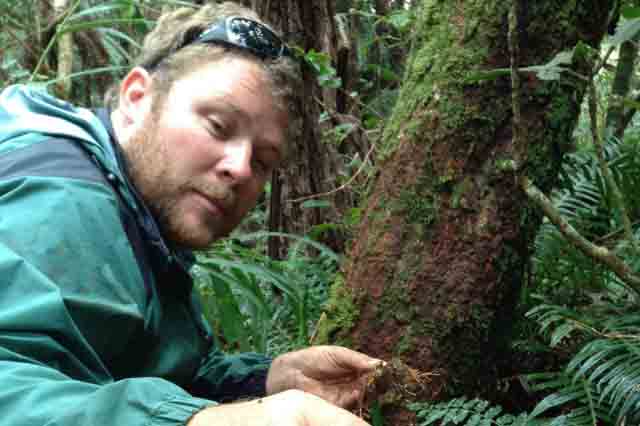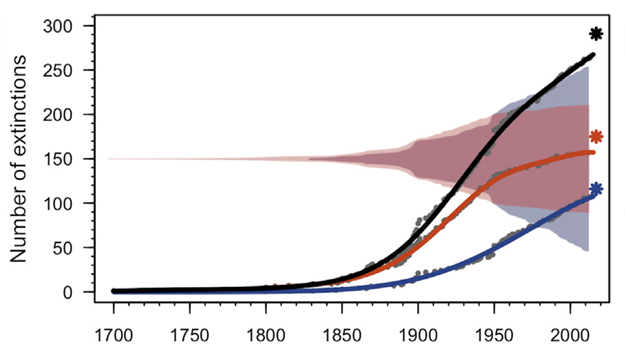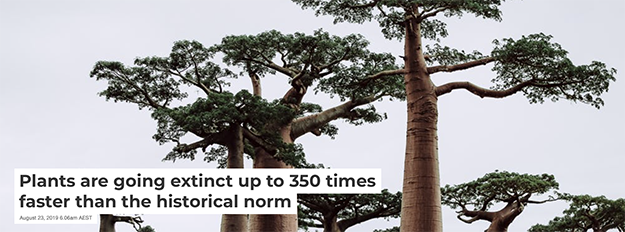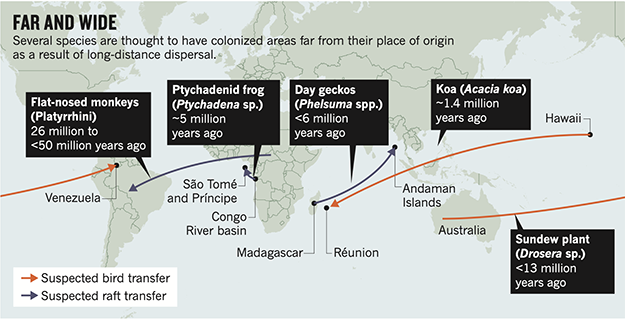Invasive Plant Ecology and Evolution Lab
Jaco Le Roux’s research group at Macquarie University

Associate Professor in the Department of Biological Sciences at Macquarie University. Read more...
Our group is interested in studying invasion ecology and global biogeography of various ‘model groups’. This work entails studying numerous ecological and evolutionary aspects of invasive plant genera or families across their global distributions. Our previous work include research on invasive cacti, Australian wattles and bamboos.
Click here to see selected publications

Many have argued that the publication of The Genetics of Colonizing Species by Herbert Baker and George Stebbins in 1965 marked the birth of ‘invasion genetics’. Much of our work in this field has been to understand the demographics and evolutionary biology of invasive plants. Using population genetic approaches, we study the dispersal dynamics of invasive populations, management impacts, introduction histories, and many other aspects. We also investigate the patterns and causes of disjunct (odd) plant biogeographical distributions using phylogeographic approaches.
Click here to see selected publicationsMicrobes are omnipresent, yet their interactions with invasive plants remain understudied. This is surprising, given the importance of microbes in plant community ecology and their influence on plant performance in new environments. Recent advances in molecular genetic approaches have opened the door to studying this unseen majority in great detail. Our work has yielded important insights into the diversity and structure of soil bacterial communities and how the presence of dense invasive plant populations impact these.
Click here to see selected publications

Some plant genera are notoriously invasive, providing superb natural experiments to study invasion ecology across various species. Our group has extensively studied Australian acacias (genus Acacia) over the last decade as a ‘model system’. We have studied various species in this genus to better understand the population genetics and phylogeography of this group, aspects related to life-history traits, biogeography, mutualistic interactions, and rapid evolution.
Click here to see selected publicationsEcological interactions, especially those that are beneficial (i.e. mutualisms) or detrimental (i.e. parasitism), play important roles in the establishment success of non-native species. Our group studies numerous aspects of the interactions between invasive Australian legumes in the genus Acacia and their nitrogen-fixing bacterial symbionts, known as rhizobia. We are interested in symbiont biogeography and the impacts of invasive legumes on native legume-rhizobial interactions. More recently, we applied theory from invasion biology to better understand how crop domestication impact plant-symbiont interactions.
Click here to see selected publications
In this paper we investigated the quantitative and qualitative differences of anthropic plant extinctions between areas with exceptionally high biodiversity (i.e. biodiversity hotspots) and areas with low diversity (i.e. coldspots). We compiled one of the most comprehensive datasets to date, identifying 291 plant extinctions since 1700 in ten of the 36 global biodiversity hotspots and six biodiversity coldspots, covering ca. 15% of the Earth’s land surface. For the majority of these extinction events, information on the cause(s) and year of extinction, the plant life-form affected, and the associated taxonomic uniqueness was collected. As expected, we found that more plant species went extinct, and at a faster rate, in biodiversity hotspots compared to coldspots. In both biodiversity hotspots and coldspots, however, extinction rates exceeded historical background rates by hundreds of times and showed recent declines.



Prof Steven Chown (Monash University, Australia) – molecular ecology of invasive plants in the sub-Antarctic as part of the A Functional Biogeography of the Antarctic research initiative. Prof Dave Richardson (Centre for Invasion Biology, Stellenbosch University, South Africa) – invasion science. Prof Allan Ellis (Stellenbosch University, South Africa) – plant-microbial interactions. Prof Llewellyn Foxcroft (South African National Parks, South Africa) – plant invasion ecology. Dr Urs Schaffner (CABI, Switzerland) evolutionary biology or invasive trees in East Africa as part of the Woody Weeds research project. Dr Ana Novoa (Academy of Sciences of the Czech Republic, Czech Republic) – invasion science. Prof Petr Pysek (Institute of Botany, Academy of Sciences of the Czech Republic, Czech Republic) – invasion science.
Prof Helena Trindade (University of Lisbon, Portugal) – molecular ecology of Acacia longifolia. Prof Cristina Marguas (University of Lisbon, Portugal) – molecular ecology of Acacia longifolia. Prof Dominique Strasberg (University of La Reunion, La Reunion) – plant biogeography. Prof Phil Hulme (Lincoln University, New Zealand) – invasion ecology. Prof Weihua Li (Southern Normal University, China) – invasion and restoration ecology. Prof Scott Carroll (University of California Davis, USA) – evolutionary biology. Prof Bettine Jansen Van Vuuren (University of Johannesburg, South Africa) – sub-Antarctic plant biogeography.
© INVASIVE PLANT ECOLOGY AND EVOLUTION LAB 2020. All Rights Reserved